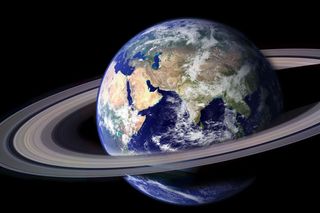
What If the Moon Had Never Formed?

During the new DC Comics Universe series "Flashpoint," in which a time-traveling supervillain alters the past to warp the present, Life's Little Mysteries presents a 10-part series that examines what would happen if a major event in the history of the universe had gone just slightly different.
Part 6: What if ... the moon had never formed?
Scientists think material gouged out by a titanic collision between the freshly formed Earth and a Mars-size celestial body some 4.5 billion years ago coalesced to form the moon .
Life would be: Migratory and on shorter day-night cycles, if existent at all. Huge tides generated by the moon – which orbited much closer to Earth when it formed – washed the chemical building blocks for life from land into the oceans and helped "stir up the primordial soup," said Neil Comins, a professor of physics at the University of Maine.
The moon's gravity has helped slow Earth's rotation from an initial six-hour day to our current 24-hour day, while also stabilizing the tilt of our planet's axis, and thereby moderating the seasons. Life forms on a moonless Earth would therefore have different patterns of activity per the short days and nights, Comins told Life's Little Mysteries. These creatures might need to migrate more frequently to cope with extreme climate swings as well.
The absence of the moon would affect life in less profound ways, too: No moon might mean no space race, which probably means no Tempur-Pedic mattresses or freeze-dried ice cream.
Previously: What would life be like if the first animals to crawl out of the sea had six legs instead of four .
Sign up for the Live Science daily newsletter now
Get the world’s most fascinating discoveries delivered straight to your inbox.
Next: What would life be like if Earth were twice as big?
- How the Full Moon Makes Scorpions Glow in the Dark
- The 'Supermoon' Did Not Trigger the Japanese Quake and Tsunami
- How the Moon Got There
Head to Newsarama.com for complete Flashpoint coverage.
Most Popular

